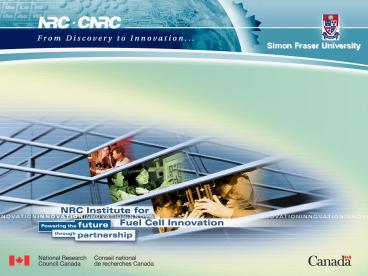Collaborative Agent Systems for Distributed Automation CASDA - PowerPoint PPT Presentation
1 / 17
Title:
Collaborative Agent Systems for Distributed Automation CASDA
Description:
... 2,500 choices 30-50 times / day. Assign arbor/ripping priority 18 choices 5-10 times / day ... 5 x 1020 choices 150 times / day. Coordinate these three ... – PowerPoint PPT presentation
Number of Views:83
Avg rating:3.0/5.0
Title: Collaborative Agent Systems for Distributed Automation CASDA
1
(No Transcript)
2
Collaborative Intelligent SystemsWilliam A.
GruverDilip B. KotakFLINT CIBI 2003UC
Berkeley - 15 December 2003
3
CIS Structure
Monitoring Identification
Communi- cations
Collaboration Coordination
Systems Architecture
Manufac. Supply Chain
Service
Infrastructure Elec. Power
Infrastructure Transport.
4
Technologies
- Self Monitoring, Identification Control
- Hardware sensors, monitoring
actuators Auto-ID Software Soft Computing - Agent Communications Infrastructure
- Hardware wired, wireless RF, 802.11
- Software ontology, protocols, security FIPA,
JADE - Agent Collaboration Coordination
- Negotiation Contract Net, Blackboard, Auctions
- Soft Computing Fuzzy Logic, Neural Networks,
Genetic Algorithms - Agent Architecture
- Hardware Distributed Computing
- Software PROSA, Multi-Agent Architectures
5
Applications
- Manufacturing Supply Chain Sector
- Wood Products Manufacturing Loewen Windows
- Service Sector
- Health, Banking, Insurance, Food
- Transportation Infrastructure
- Public, Fleet
- Energy Infrastructure
- Electrical Distributed Power
- Hydrogen Alternative Fuels Mobile
Stationary Fuel Cells
6
Typical Rough Mill Layout
Chop Saw
Scanner
Rip Saw
Scanner
LUMBER WAREHOUSE
Lumber
7
Summary of Key Issues
- Select most suitable jag 2,500 choices 30-50
times / day - Assign arbor/ripping priority 18 choices 5-10
times / day - Schedule components on kickers 5 x 1020
choices 150 times / day - Coordinate these three
- Optimizing the overall performance of the
following - Costs
- Yield
- Productivity
- Grade length utilization
- Order-file satisfaction
- On time delivery
8
System Architecture - for Rough Mill Production
Local optimization
Rip each piece of lumber into a best combination
of strip by width
Agent 1
Agent 2
Mediator Agent
Select a best load or jag of lumber from the
warehouse
- Facilitators functions
- Static optimized overall schedule
- Task decomposition and allocation
- System coordination and decision making
- Learning
Agent 3
Optimize component schedule to produce a best
combination of components for each strip
9
Applications Three Layers
- Manufacturing
- Supply Chain Factory coordination of logistics
- Work-Cell coordination of production
- Device intelligent autonomous devices
- Energy Infrastructure
- Inter Community coordination of supply demand
- Intra-Community coordination of devices
- Devices
- Photovoltaic cell, wind turbine, electrolyzer,
reformers, storage, compressor, dispensers - Generalize to Multi-Layered Holarchy
- Hierarchy of collaborative agents
10
Intelligent Wireless MicroRouter
- Multi-point, multi-hop, wireless connectivity of
computers, sensors, displays, PDAs - Intelligent routing and priority scheduling over
extended distances at 11-54 Mbs - Based on IEEE 802.11x protocol standards
- Distributed systems implementation in JADE
- In development by Intelligent Robotics
Corporation and Simon Fraser University
11
Extended Coverage using 802.11
12
Features
- Hubless
- Self organizing connectivity without centralized
communication - Intelligent
- Self configuring without server or external
router - Distributed scheduling of tasks by priority,
time, due dates - Wireless
- Protocol IEEE 802.11b/g
- Interfaces USB2.0, RS232, IEEE 802.3
- Scalable
- Additional network devices and services may be
easily added - Robust
- Adaptability to user demands and network failures
- Secure
- Advanced encryption algorithms
13
Industrial ApplicationUtility Metering
- Enables utility meters to be networked without
the need for hubs - Utility meter data intelligently routed over
networks with millions of nodes - Provides network management, load balancing, and
priority scheduling of services - Applications also to transportation and other
infrastructure systems
14
Distributed Combinatorial Scheduler
- Process
- task performed by one agent
- Operation
- sequence of processes
- never revisits an agent
- Fully distributed algorithm
- Software
- multi-threaded C and OpenGL
- being ported to Java for operation in JADE
environment
DCS2
DCS1
15
Conclusions
- Collaborative intelligent systems have broad
applications - manufacturing resource management, planning, and
control - transportation, energy, and other infrastructure
systems - service systems
- Collaborative intelligent systems provide
- improved flexibility
- reduced setup-time
- higher robustness
- integration of human intelligence
- Collaborative intelligent systems are
characterized by - reconfigurability
- task level programming
- high-level cooperation
16
Further information
www.ensc.sfu.ca/irms Intelligent Robotics and
Manufacturing Systems Laboratory www.ieeesmc.
org IEEE-SMC Technical Committee
Collaborative Intelligent Systems
hms.ifw.uni-hannover.de Holonic Manufacturing
Systems Consortium www.fipa.org
Foundation for Intelligent Physical
Agents www.ims.org Intelligent Manufacturing
Systems Program
17
(No Transcript)































